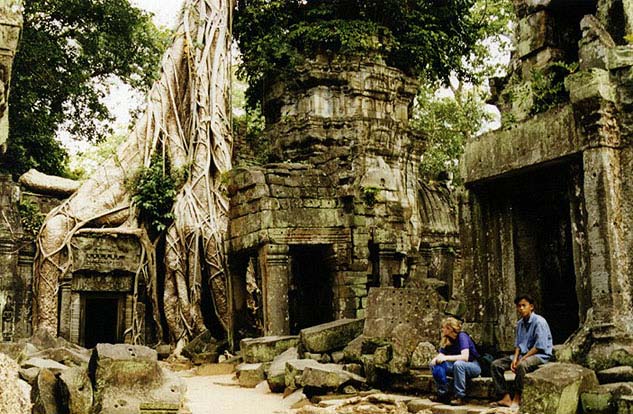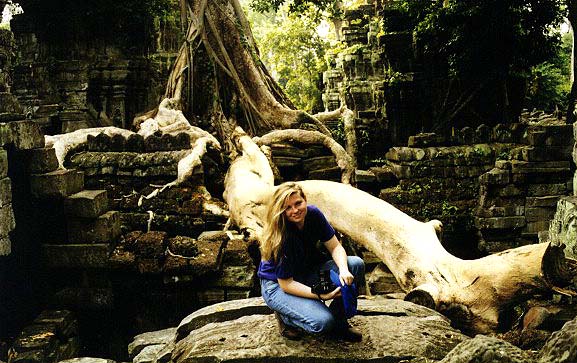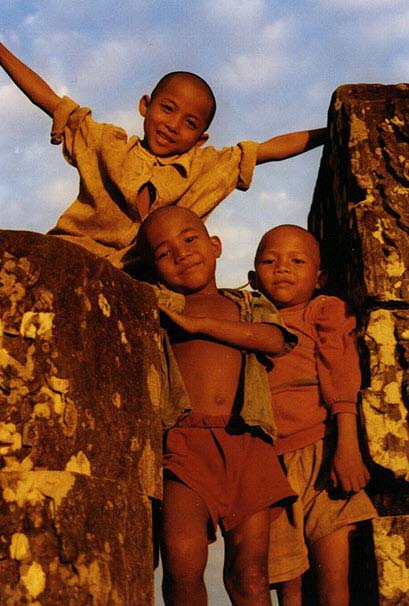
Sunset on the City
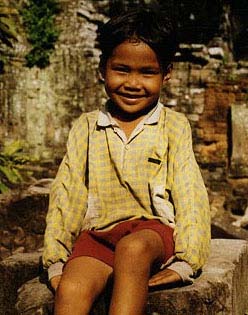 |
| Da, our young guide to Banteay Kdei |
After lunch and shopping we went to the ruins of Banteay Kdei, where we were immediately greeted by two boys. One of them was a tiny little kid. He stayed by my side the whole way through the ruins. The older boy walked next to Andy. Both boys explained the history of Banteay Kdei and pointed out different features. I asked the little one his name.
"Da," he said. I would guess he spelled it differently, but that's what it sounded like to me.
"How old are you?" I asked.
Da looked confused. The older boy spoke with him in Khmer then answered, "Seventeen. He's seventeen."
Andy and I laughed. There was no way this little guy was more than ten years old.
"Oh, seven," the older boy corrected himself. "He's seven."
 |
| Da's friend |
Andy and I felt bad for contesting him. Maybe malnutrition in the wake of the Khmer Rouge reign stunted his growth. Overall I found it very difficult to determine children's ages in Cambodia.
"Built by Jayavarman VII in the 12th century," Da pointed to the ruins. Our impressive young guides led us through Banteay Kdei pointing our details here and there. Da and I walked a few paces behind Andy and the older boy, and I could hear that sometimes Da was just repeating his friend, pretending the words were directly from his own memory. When he smiled up at me, I could see that his two front teeth were just coming in.
in the 12th century," Da pointed to the ruins. Our impressive young guides led us through Banteay Kdei pointing our details here and there. Da and I walked a few paces behind Andy and the older boy, and I could hear that sometimes Da was just repeating his friend, pretending the words were directly from his own memory. When he smiled up at me, I could see that his two front teeth were just coming in.
Afterwards, we gave them some money for the tour. They ran off laughing and wrestling with each other. Andy and I crossed the road and sat at the edge of Srar Srang lake. Da and the older boy joined us there for a while, then waved good-bye as we got back into the car and headed for Prasat Kravan.
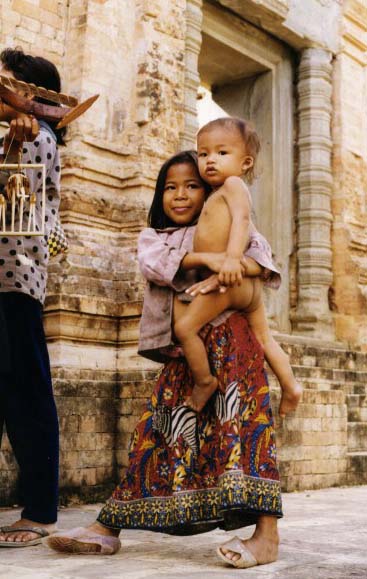 |
| Kids at Prasat Kravan |
"That's definitely the youngest person I've ever done business with," Andy shook his head and laughed.
Little girls played jump rope in front of the ruins. One child balanced her baby brother on her hip. Boys rested on the rocks, and dogs challenged roosters.
Next stop was Ta Prohm, a 12th century temple built by Jayavarman VII in honor of his mother. As usual, an army of T-shirt vendors rushed us. In all the commotion a kid cut in and offered to led us through the ruins. We said no thank you, crossed onto the grounds, then suddenly realized that in Ta Prohm it might be best to follow a local guide - the Lonely Planet guide noted that the local kids know all the best places to take pictures here. I ran back out and found the kid standing by a truck holding a drum. He was strikingly handsome with his high cheekbones and wavy black hair. He looked about fourteen years old to me. Meas (pronounced May-ahs) it turned out, was eighteen years old. That means he was born in 1979... the year the Khmer Rouge fell.
